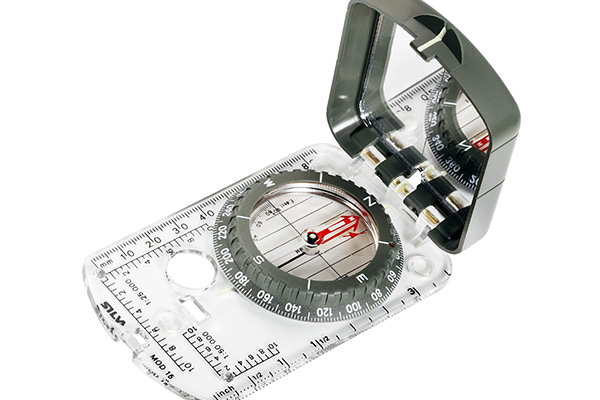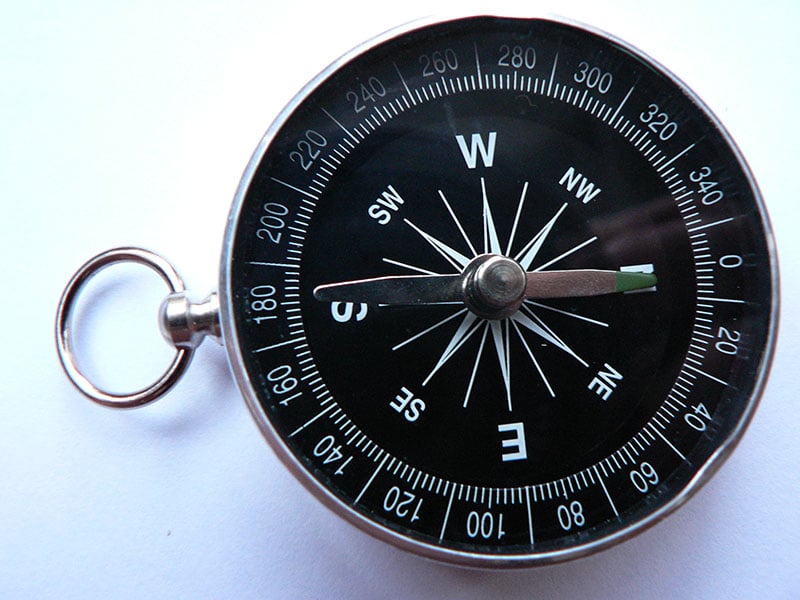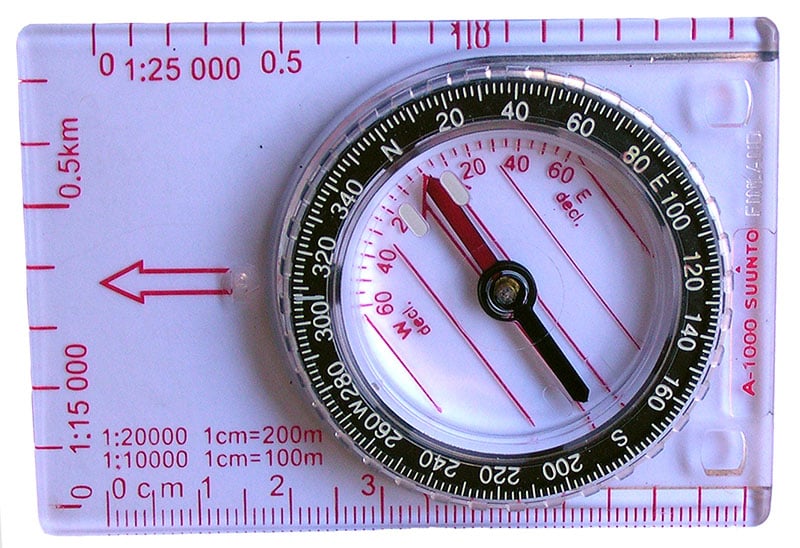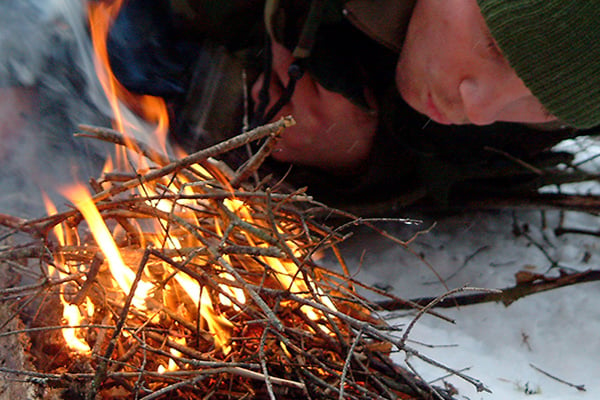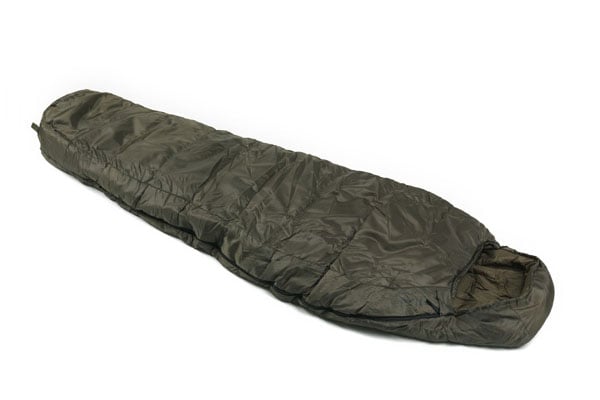Last Updated on
By Luke Brandenburg
For hikers, hunters and general outdoorsman, getting lost in the field can be an extremely dangerous and frightening situation. To make matters worse, the chances of getting lost are much higher than most people would expect. Outdoorsman that spend a lot of time out in large expanses of sparsely-populated land will almost inevitably find themselves questioning the way home at some point.
Even the most experienced and knowledgeable outdoorsman can experience an unexpected change in weather or make a wrong turn. It is essential to take proactive measures that will ensure your safety if things go wrong out in the field, and one of the first steps you should take is to find a good compass.
Why Carry a Compass?
A survival kit is an essential part of any outdoorsman’s field bag, and a good compass is possibly the most important tool you can have in your kit. A handheld GPS device can be great for logging data and quickly finding your exact location. However, these devices are completely dependent on good satellite signal and battery power. That means that they can easily let you down when you need them most.
A compass is independent of battery power and satellites. It can be an invaluable tool all its own, but a solid topographic map can make it even more powerful. If you’re going out into an expansive area, you should never leave home without a good map and compass.
The “Floating-Needle” Compass
Compasses that use a magnetized needle to align with the magnetic field of the earth are called “floating-needle” compasses. The traditional-style compasses provide precise readings with liquid-filled needle housings that steady the needle. There are three primary types of “floating-needle” compasses.
Basic
A basic floating-needle compasses can be a great choice for the beginner outdoorsman. They are inexpensive and reliable in most scenarios. Basic compasses include all the essential components; however, they do lack some of the features found in more expensive options like mirrors or declination adjustments.
Advanced
Advanced compasses offer all of the same essential components as the basic compasses, but they also include bonus features to increase accuracy and improve ease of navigation. For those who regularly go off the beaten path and deep into the backcountry, these full-featured compasses are worth the extra cost.
Accessory
Accessory compasses are usually found on watches or key rings, but some are independent units with no base plate. They are designed for quick and easy reference, not for serious emergency navigation. Accessory compasses will accurately point you to magnetic north, but you shouldn’t depend on them when heading into the backcountry.
Features of the Basic Compass
Experienced hikers and backpackers often use what is called a “base plate” or “orienting” compass. While “navigation” refers to the process of calculating the direction of your destination and guiding yourself to that location, “orienting” is the process of finding your exact position at any given time. Some of the most common basic compass features include:
A Magnetized Needle
The magnetized needle is a pivoting needle that points to the strongest magnetic field, typically magnetic north. While true north represents the geographic location of the North Pole where all the globe’s longitudinal lines meet, magnetic north is actually located along an island chain in the Canadian arctic. More than 1,000 miles separate true north and magnetic north. Those working from a map must understand how to adjust for this difference.
A Liquid-filled Capsule
The housing that encases the needle and the damping fluid is often referred to as the liquid-filled capsule. The fluid inside of it works to stabilize much more effectively than an air-filled housing. Although this liquid will never actually freeze, it may contract at low temperatures or high elevations and create bubble. This bubble does not affect accuracy and will go away once the compass returns to more normal conditions.
Rotating Bezel
The rotating bezel, or the azimuth ring, encircles the outer edge of the compass and includes markings to show degrees from 0 to 360. The smaller the degrees interval on the ring, the more accurate the compass. The direction that you need to go would be called the azimuth, or bearing.
Ruler and Base Plate
Most basic compass capsules rest on a rectangular, transparent base. Some include the bonus feature of a ruler etched onto the base plate. The ruler can be extremely helpful when scaling a map.
Advanced Compass Features
For those who need some added features in a compass, there are hundreds of different options to choose from. Here are a few of the most common advanced compass features:
Declination Adjustment
A compass with a declination adjustment offers a more sophisticated orienting arrow. During travel, your magnetic declination represents the difference between magnetic north and true north. The declination adjustment keeps the arrow pointed at true north instead of magnetic north.
Many compasses with this feature come with a small adjustment tool that can be used to turn a small screw near the compass housing. When turned, this screw offsets the needle to adjust for declination. New adjustments can be made before leaving for each trip.
Sighting Mirror
The sighting mirror is a fold-out surface designed to make precise readings easier. When folded open, the mirror allows you to sight through a top notch to find a distant landmark and see your bearing at the same time. Most can also double as an emergency signaling device.
Other Advanced Features
Some of the other common features found on advanced compasses include a magnifying lens for easy map reading, luminescent needles for travel after dark, lanyards, clinometers and more.
Choosing the Compass for You
There are thousands of different options when it comes to compasses. To choose the right one for you, think about the situations you may need a compass for, and consider your aptitude at navigating a map and manually adjusting for declination. Take a look at some of the available features and decide which ones you really need.
If you’re working with a budget, you may have to make some sacrifices when it comes to features that simply make travel easier. Just make sure you have the essentials you need to find your way in any possible situation.
